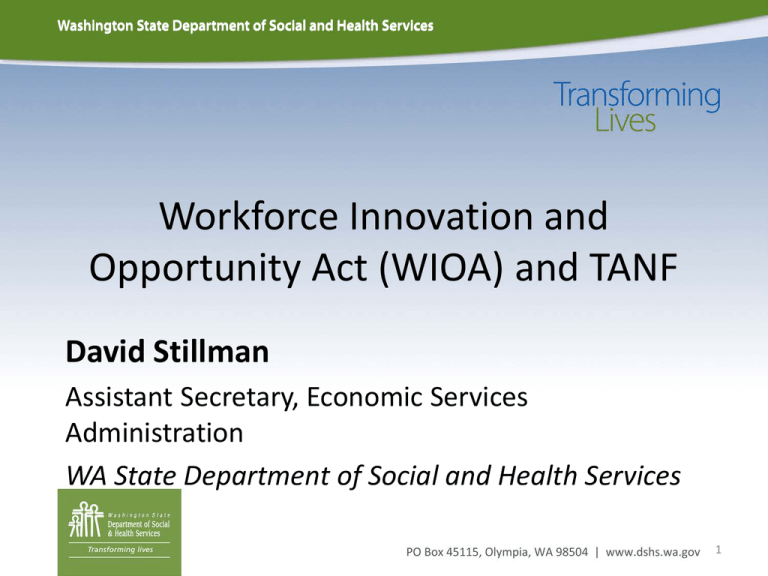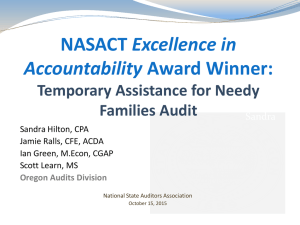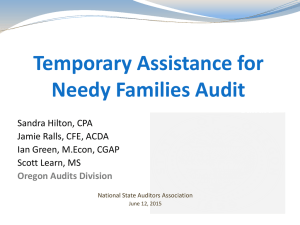Workforce Innovation and Opportunity Act (WIOA) and TANF David Stillman
advertisement

Workforce Innovation and Opportunity Act (WIOA) and TANF David Stillman Assistant Secretary, Economic Services Administration WA State Department of Social and Health Services 1 Range of Opportunities • TANF-WIOA collaboration • TANF partnering in one-stop system – Statewide – In specific localities • Combined State Plan including TANF • TANF-WIOA consolidation 2 What hasn’t changed? • TANF work participation rate (WPR) • Challenges of aligning mandatory and voluntary programs, participation and outcome measures • No new money (on either TANF or WIOA side) • Cost allocation requirements – TANF funds still limited to members of needy families 3 What hasn’t changed? • Eligibility determination is separate • Not required to consolidate administration or staffing with workforce programs • Does not automatically change either TANF or WIOA policies that might limit access of recipients to programs. 4 Funding Agreements • Does not override rules on use of funds for individual programs. • Cost allocation based on “proportional use” of services • Local areas set contributions under MOU • If local area can’t come to agreement, state policy applies – State policy can’t require TANF to contribute more than 1.5% of Federal funds spent on employment and training services to support infrastructure. 5 TANF perspective: Why partner? • Place TANF in the context of workforce • Enhance TANF recipients’ access to high quality training opportunities tied to job openings • Improve continuity for parents who may move on and off of TANF over time • Reduce duplication of activities, services (possibility of freeing up funds for other purposes) 6 Changes require strong state/local implementation • By partnering and engaging in the WIOA planning process, TANF stakeholders may be able to influence WIOA to ensure it effectively serves the most disadvantaged workers • TANF programs may have more expertise in serving individuals who have barriers to employment, including in running transitional jobs programs 7 Concerns: Collaboration has not always been effective • WIA performance measures, along with employer focus has sometimes led workforce programs to focus on people who enter at higher skill levels, have less “barriers to employment,” or with more work experience than TANF recipients. • Concerns regarding cultural competence, true accessibility, opportunity, and responsiveness 8 Stakeholder Feedback • Cross training and professional development for DSHS and workforce system partner staff. • Data and information sharing • Common intake • Blended/braided funding • Coordinated approach to ‘life skills,” “soft skills,” and “employment etiquette” education 9 Stakeholder Feedback • Employer and business engagement and education that includes investment on the employer’s end around developing and retaining an effective and skilled workforce. • Access • Equity 10 Questions? 11


